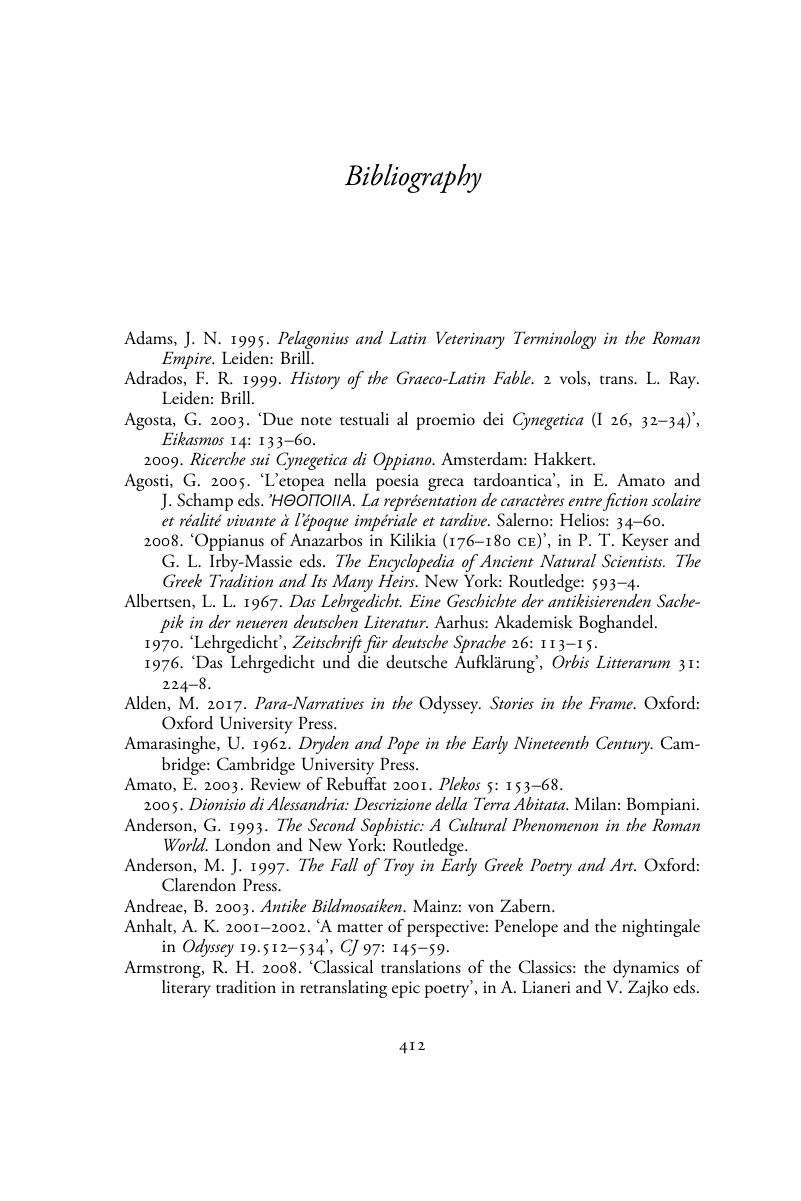Book contents
Bibliography
Published online by Cambridge University Press: 24 September 2020
Summary

- Type
- Chapter
- Information
- Oppian's HalieuticaCharting a Didactic Epic, pp. 412 - 449Publisher: Cambridge University PressPrint publication year: 2020

